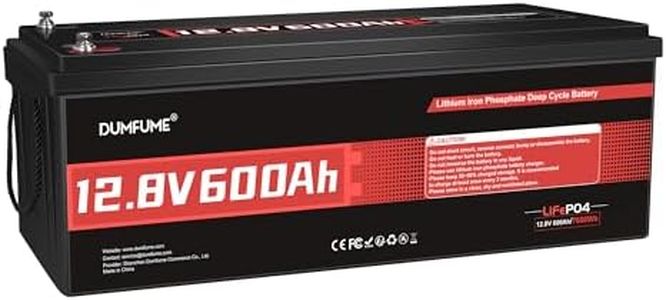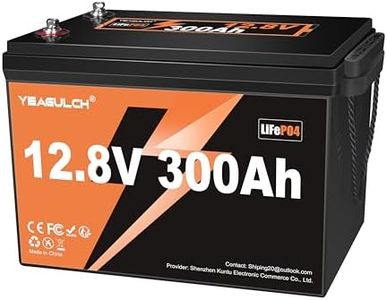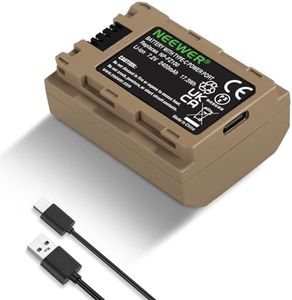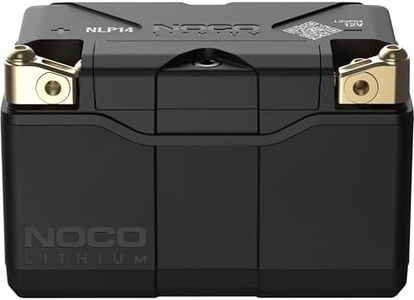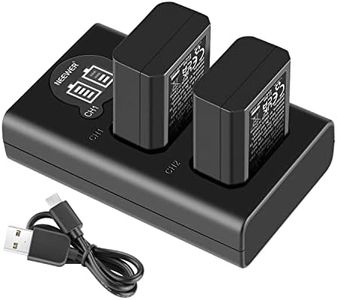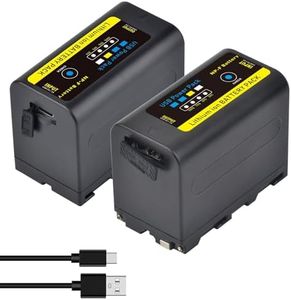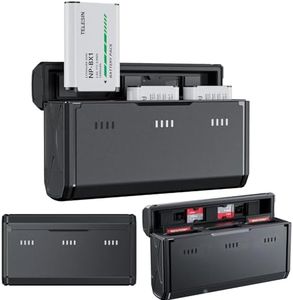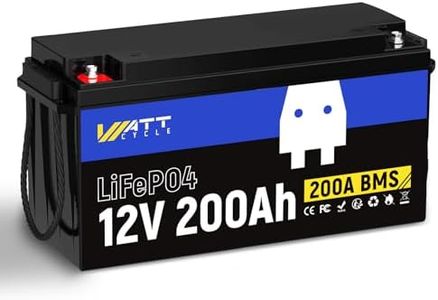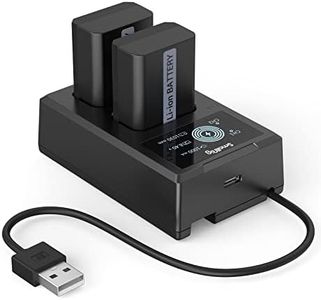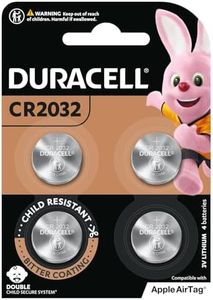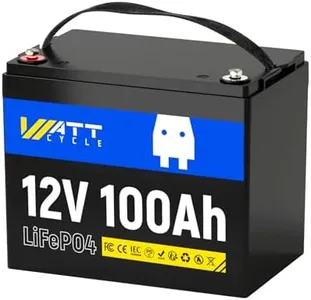We Use CookiesWe use cookies to enhance the security, performance,
functionality and for analytical and promotional activities. By continuing to browse this site you
are agreeing to our privacy policy
10 Best Lithium Batteries
From leading brands and best sellers available on the web.Buying Guide for the Best Lithium Batteries
Choosing the right lithium battery is all about understanding your power needs and matching them to what the battery can offer. Lithium batteries are popular in everything from portable electronics and power tools to electric vehicles and solar storage because they’re lightweight, recharge quickly, and last longer than many other types of batteries. The most important thing is to look for a battery that meets your device or application's specific requirements, balances performance with safety, and is capable of handling the workload you intend to put it through.Capacity (mAh or Ah)Capacity, usually shown in milliamp-hours (mAh) or amp-hours (Ah), tells you how much charge the battery can store. This directly affects how long the battery can power your device on a single charge. Low-capacity batteries are fine for small gadgets or devices used briefly, while high-capacity ones are needed for things like electric vehicles or solar systems where longer usage between charges is important. Think about how long you need the battery to run your device and choose a capacity that matches.
Voltage (V)Voltage indicates the energy push the battery provides. It's important because your device may require a certain voltage to work correctly and safely. Most small electronics use lower voltages, while larger devices or tools may use higher ones. Always match this number exactly to your device’s requirements, as the wrong voltage can even damage your equipment.
Maximum Discharge Current (A)This spec is about how much power the battery can safely deliver at once. Devices that need a quick burst of power, like power tools or drones, require batteries with a higher maximum discharge current. For low-consumption applications, like small electronics, a lower discharge rate is usually enough. Look at your device's manual or specs to find the right range.
Cycle LifeCycle life tells you how many full charges and discharges the battery can handle before its capacity drops below a usable level. More cycles mean the battery will last longer if you recharge it regularly. Applications with frequent charging, like daily use in scooters or solar power storage, need higher cycle life for better long-term value.
Size/Form FactorLithium batteries come in various shapes and sizes, such as cylindrical, pouch, and prismatic. The physical dimensions must match the space available in your device. If you’re replacing a battery, check the size and form factor to ensure a proper fit. For new projects, consider which shape is easiest to install and connects best with your setup.
Safety FeaturesSafety is critical with lithium batteries, which can be sensitive to overcharging, deep discharging, and temperature extremes. Features like built-in protection circuits, thermal cutoff, and short-circuit protection prevent problems. If your battery will be in a device that’s hard to monitor, or used outside or in rough conditions, prioritize models with multiple safety features.
Operating Temperature RangeLithium batteries perform best within certain temperature ranges. Using them outside these limits can reduce their lifespan or even cause hazards. For indoor gadgets, this spec is less critical, but for outdoor equipment or things used in hot or cold places, choose a battery rated for those temperature extremes.
